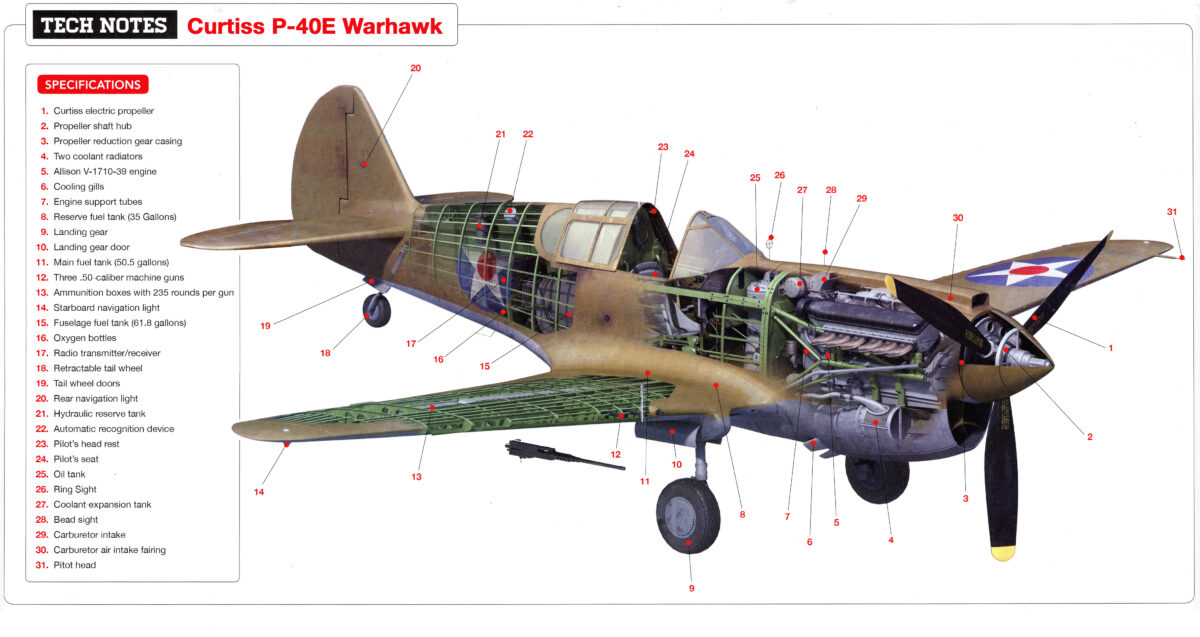In fall 1934 chief engineer Don Berlin’s design team at Curtiss-Wright introduced an all-metal monoplane with retractable landing gear to the corporation’s successful line of Hawk biplane fighters. Designated the Hawk 75, or P-36, the plane proved its mettle in combat when the ultimately outmatched Armée de l’air went up against the Luftwaffe during the 1940 Battle of France. Curtiss quickly followed up with the Hawk 81, or P-40, replacing the 75’s radial engine with an in-line Allison V-1710 12-cylinder, liquid-cooled engine with a single-stage supercharger. Britain’s Royal Air Force dubbed it the Tomahawk and debuted it in the Middle East in May 1941.
By early 1942 the “Flying Tigers” of the 1st American Volunteer Group had made the shark-mouthed P-40 famous over China and Burma, but the plane lagged behind contemporary foreign fighters. Curtiss had already begun redesigning the plane around the shorter 1,150-hp Allison V-1710-39, which boasted an internal propeller reduction gearbox. The result was the Hawk 87, entering U.S. Army Air Corps service that year as the P-40D, with two .50-caliber machine guns in each wing, and the P-40E Warhawk, with three .50-cals in each wing.
Though only a marginal improvement over earlier P-40s, the P-40E saw widespread use with the air arms of Britain (which dubbed it the Kittyhawk), Australia, Canada, France, the Soviet Union and the United States—including the 3rd and 33rd Pursuit squadrons (Provisional) that defended Darwin—and were marked similarly to the plane shown. Further attempts to refine the design culminated in the heavily produced P-40N—the last Curtiss-Wright fighter to see service before the company ceased building aircraft on Oct. 10, 1948.
Power plant: Allison V-1710-39
Rating at altitude: 1,150 hp at 11,800 feet
RPMs: 3,000
Propeller: Three-bladed, constant speed
Gross weight: 8,280 pounds
Empty weight: 6,350 pounds
Length: 31 feet 2 inches
Wingspan: 37 feet 3.5 inches
Landing speed: 85 mph
Max. speed at altitude: 354 mph at 15,000 feet
Cruising speed: 258 mph
Service ceiling: 29,000 feet
Initial climb: 2,580 feet per minute
Range: 1,150 miles
Armament: Six Browning .50-caliber machine guns





